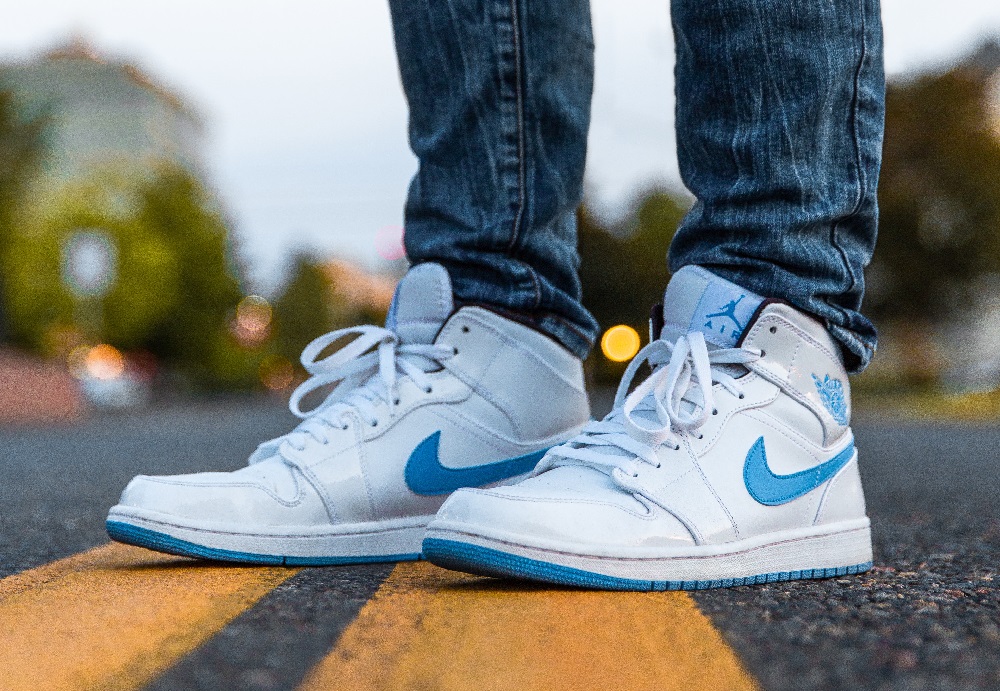Dr Thomas Turner writes on the hidden deeper, roots of sneaker fashions and obsessions; the subject of his PhD in History at Birkbeck, which he has now turned into a book.

Sports shoes are an inescapable part of modern fashion. We see them everywhere, from the sports field to the catwalk, the classroom to the battlefield. Comfortable, convenient, inexpensive, and accessible, for many of us shoes that have roots in sports are our go-to everyday footwear. The big names – adidas, Nike, Puma, Reebok, Under Armour – have some of the most widely recognised and well-established brands in existence. Alongside them an array of smaller, more niche companies flourish. It amounts to an industry worth billions of dollars, a truly global enterprise with design, manufacturing, and sales spread around the world.
 Sales are one indicator of the popularity of this type of footwear, but recent years have also seen the growth of a rich and diverse culture around sneakers. Global communities of obsessive sneakerheads and collectors now connect the worlds of art, design, music, fashion, and popular culture. Yet these groups only reflect a wider appreciation for athletic footwear. Whether they were Dunlop Green Flash, adidas Samba, Puma States, Reebok Classic, Nike Air Max, or Yeezy 350, many of us remember our old shoes with nostalgic warmth, and almost everyone has a particular model that magically transports them to a specific time and place. In this respect, sports shoes have developed a cultural significance much greater than other forms of footwear or clothing.
Sales are one indicator of the popularity of this type of footwear, but recent years have also seen the growth of a rich and diverse culture around sneakers. Global communities of obsessive sneakerheads and collectors now connect the worlds of art, design, music, fashion, and popular culture. Yet these groups only reflect a wider appreciation for athletic footwear. Whether they were Dunlop Green Flash, adidas Samba, Puma States, Reebok Classic, Nike Air Max, or Yeezy 350, many of us remember our old shoes with nostalgic warmth, and almost everyone has a particular model that magically transports them to a specific time and place. In this respect, sports shoes have developed a cultural significance much greater than other forms of footwear or clothing.
I got my first pair of adidas in the mid 1980s, when I was in primary school. I thought they were fantastic. I have had countless pairs since then but my fascination with sports shoes has only grown. It was this that led, eventually, to my first historical writing on the subject. Studying at Birkbeck for an MA in Social and Cultural History, in spring 2005 I had taken a course organised by Professor Frank Trentmann on the history of consumption. I wrote my end-of-term essay on the adidas Superstar, a 1960s basketball shoe that in the 1980s became closely associated with hip hop and the New York rap group Run-D.M.C. The essay did well and later formed the basis of a proposal for a part-time PhD on the broader social and cultural history of sports shoes. My goal was to uncover the hidden, much deeper, roots of sneaker fashions and obsessions. I wanted to establish how sports shoes had come to be as they are as objects, but also to investigate the ways in which people in the past had thought about them. This meant finding how sports shoes were perceived and portrayed by makers and consumers, but also how they were integrated into popular fashions and cultures away from the sports field. Crucially, it meant looking at a broad sweep of global history, from the mid 19th and to the early 21st Century, and considering sports footwear against a changing landscape of society, sport, fashion, industry, and technology.

Thomas Turner
I began work on the PhD in late 2006 and finally completed it in autumn 2012. Throughout, I benefited from the supportive environment in the Department of History, Classics and Archaeology, whether it was advice from my supervisors or the encouragement of fellow PhD students struggling with their own projects. With the viva a surprisingly pleasant memory and the thesis submitted to Senate House, in 2015 I set about transforming the PhD into a book for a more general readership. I secured a deal with Bloomsbury, and in the years afterward juggled the book project with teaching, professional work, and other academic research and writing. The final result, The Sports Shoe: A History from Field to Fashion, expands on my PhD to tell the transnational story of sports footwear over 150 years. With 160 archive images, it moves from the tennis courts of the 1870s to the streets of 1980s New York to the global advertising campaigns of the 2000s. It is inevitably a very personal story, documenting and sharing my own love for this type of footwear, but it demonstrates that the humble sports shoe is one of the most culturally rich and economically significant products of our time.
The Sports Shoe: A History from Field to Fashion by Thomas Turner is published by Bloomsbury, £30.00

This is great! Always a pleasure to read about scholarship about clothes and makes clear how relevant and important it is as a way of thinking about so many issues. Thank you and I look forward to reading the book!
Thank you! Yes, clothing is a way to think about all sorts of wider issues and historical phenomena, which is what I’ve done in the book. I hope you enjoy it.
Hi, love your book! I’m looking into the evolution of trainers from when they first were widely available in the 20th century and how the purpose was first mainly intended for different sports/ athletes. To the assortment of “fashion trainers” we see now with no real purpose- just a lot of different styles and colour ways. I want to create a brief timeline of how this started to happen. Any ideas on who to look at?